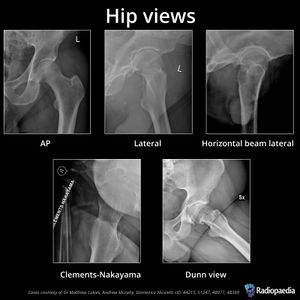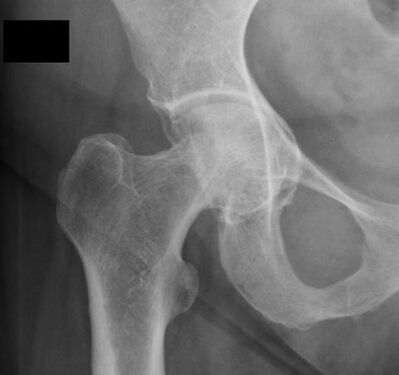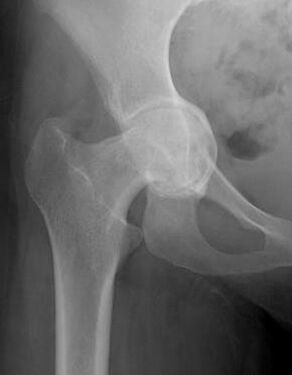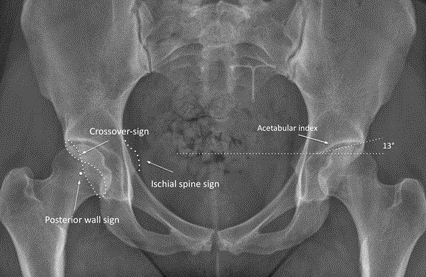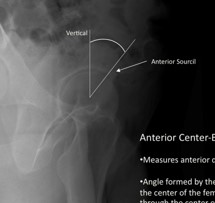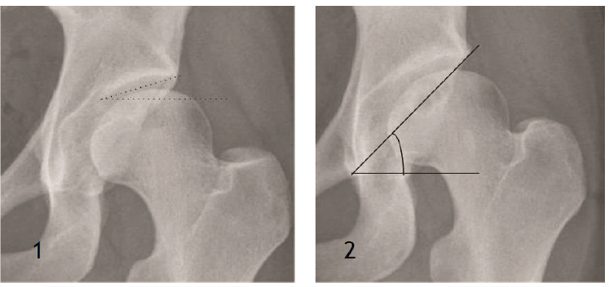◒
Hip Radiograph
From WikiMSK
This article is still missing information.
The hip series is comprised of an anteroposterior (AP) and lateral radiograph of the hip joint. The series is requested for a myriad of reasons from trauma to atraumatic hip pain.
Indications
Hip radiographs are performed for a variety of indications including
- trauma
- hip pain
- abnormal gait
- inability to weight bear
- arthropathy
- knee pain
Projections
Standard projections
- AP view
- demonstrates the hip joint in the AP plane, with the limb internally rotated so the neck of the femur is in profile
- often only performed in follow up studies
- lateral view
- standard rolled lateral view demonstrating the femoral neck and acetabular rim can only be performed on non-trauma patients
Modified trauma projections
- horizontal beam lateral view
- lateral projection demonstrating the neck of the femur without movement of the affected limb
- can only be conducted on unilateral hip trauma
- Clements-Nakayama view
- lateral projection demonstrating the neck of the femur without movement of the either limb
- the ideal projection for bilateral hip or femur trauma
Additional projections
- Pelvic AP radiograph
- Dunn view
- lataral projection to aid and diagnose femoroacetabular impingement (FAI) due to its increased sensitivity for detecting femoral head-neck asphericity.
- frog leg view
- bilateral examination allows for better visualisation of the hip joints and femoral neck. It is almost exclusively used in the paediatric population to assess for slipped upper femoral epiphysis (SUFE) and Perthes disease.
Interpretation
See Sutter et al.[1]
Acetabular Coverage
Acetabular roof depth
Normal is 75% coverage
- Acetabular depth ratio
- Lateral centre edge angle – normal 20-45 (Wiberg variant is to edge of sourcil, 18-42)
- Femoral extrusion – normal less than 25%
- Lequesnes anterior centre edge angle – normal 25-50
Acetabular angle
- Tonnis Angle – draw towards most medial sclerotic edge (the sourcil).
- Normal: 0-10 degrees
- Dysplasia: >10 degrees
- Pincer FAI risk: <0 degrees
- Sharp angle – draw from distal part of teardrop (total acetabulum)
- Dysplasia: >45 degrees
References
Part or all of this article or section is derived from Hip series by Amanda Er and Andrew Murphy et al., used under CC BY-NC-SA 3.0
